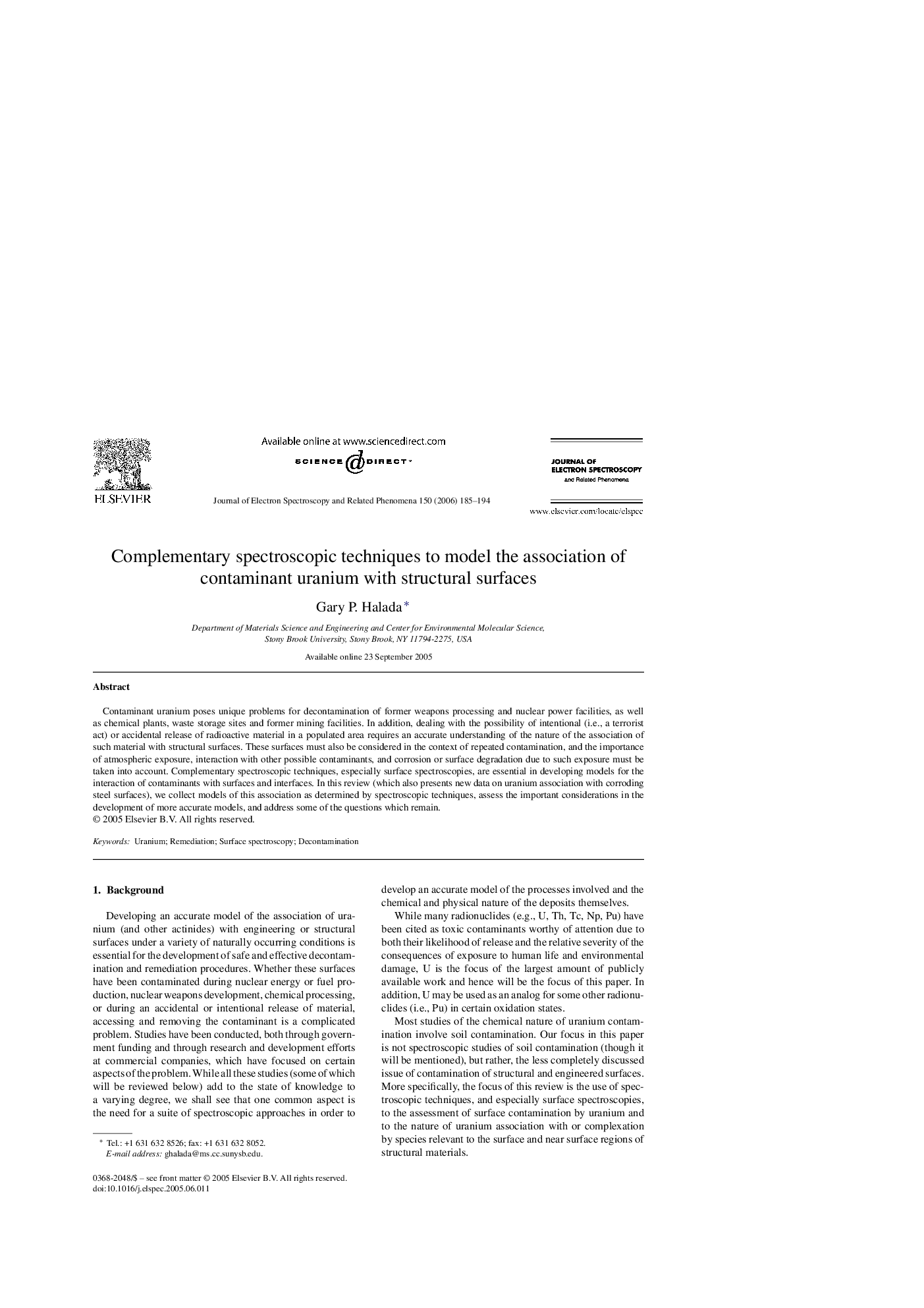| Article ID | Journal | Published Year | Pages | File Type |
|---|---|---|---|---|
| 5397244 | Journal of Electron Spectroscopy and Related Phenomena | 2006 | 10 Pages |
Abstract
Contaminant uranium poses unique problems for decontamination of former weapons processing and nuclear power facilities, as well as chemical plants, waste storage sites and former mining facilities. In addition, dealing with the possibility of intentional (i.e., a terrorist act) or accidental release of radioactive material in a populated area requires an accurate understanding of the nature of the association of such material with structural surfaces. These surfaces must also be considered in the context of repeated contamination, and the importance of atmospheric exposure, interaction with other possible contaminants, and corrosion or surface degradation due to such exposure must be taken into account. Complementary spectroscopic techniques, especially surface spectroscopies, are essential in developing models for the interaction of contaminants with surfaces and interfaces. In this review (which also presents new data on uranium association with corroding steel surfaces), we collect models of this association as determined by spectroscopic techniques, assess the important considerations in the development of more accurate models, and address some of the questions which remain.
Related Topics
Physical Sciences and Engineering
Chemistry
Physical and Theoretical Chemistry
Authors
Gary P. Halada,
